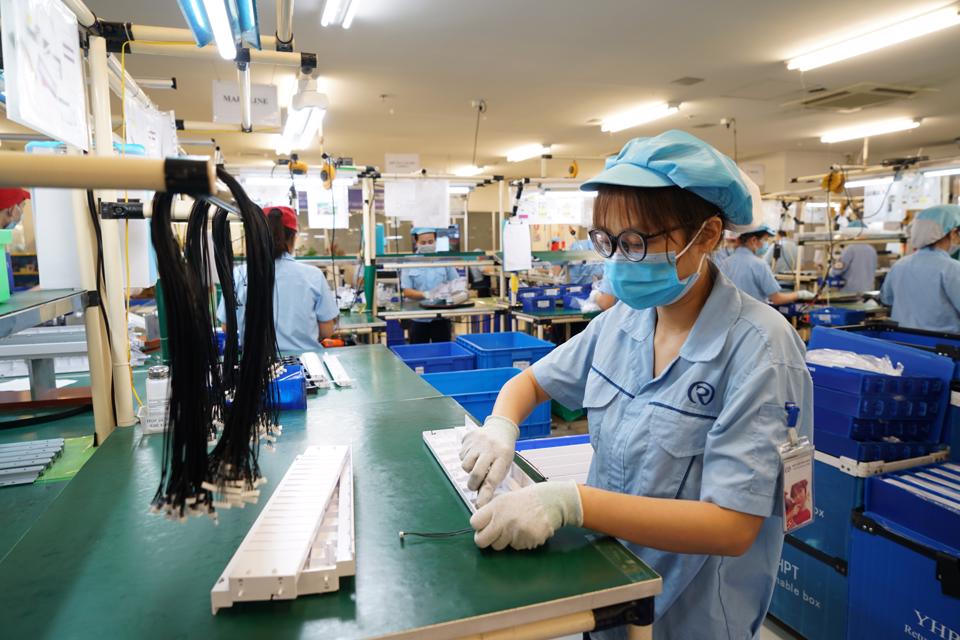HSBC raises Vietnam’s GDP economic prospects
Vietnam is likely to remain one of the outperformers in Asia.
HSBC has raised its forecast for Vietnam’s GDP growth to 8.1% from its previous 7.6%, thanks to lingering re-opening tailwinds.
| Electronics production at Rhythm Precision Vietnam at Noi Bat Industrial Park, Soc Son District. Photo: Pham Hung/The Hanoi Times |
In its latest Asian economics quarterly report, HSBC said 2022 was a year of booming recovery, making Vietnam likely one of the outperformers in Asia.
In the third quarter, GDP rose 13.7% year on year, thanks to a resilient external sector and robust domestic demand. That said, the growth outlook is now clouded by increasing trade headwinds.
However, the report said the growth outlook is now clouded by increasing trade headwinds. After growing over 17% year on year in the first three quarters of 2022, Vietnam’s export growth sharply moderated in October, with November seeing the first meaningful year-on-year decline in two years.
“The economic slowdown in the US has exacerbated the woes, as the US is the largest market for many of Vietnam’s goods exports,” stated the report.
On a positive note, domestic demand has come to a partial rescue, thanks to an ongoing recovery in its labor market. While the unemployment rate dropped to 2.3% as of the third quarter, there is still potential for a further decline, as many jobs are concentrated in tourism-related sectors.
HSBC’s report added challenges will likely be more acute in 2023, particularly after the re-opening effect fades and the impact of high inflation starts to kick in with a lag.
“Therefore, we expect growth to moderate to 5.8% from the previous 6%,” it said.
The biggest downside risk to Vietnam’s growth is intensifying trade headwinds. Vietnam is not immune to a notable global trade slowdown – in other words, “pay-back” time has arrived.
In addition, Vietnam has started to see stronger inflation pressures. “Not only has core inflation accelerated, but Vietnam has also seen a domestic energy shortage, keeping headline prices elevated,” it asserted.
The report forecast Vietnam’s inflation to reach 4% in 2023 instead of the previous 3.7%. “This means the SBV will likely continue its tightening cycle,” it said.
As the last ASEAN central bank to move, the SBV has been actively “playing catch up” in the face of a weakening VND and rising imported inflation. Only starting in September, the SBV has delivered back-to-back rate hikes of 100bp each time, taking the refinancing rate to 6.0% by end-October.
External factors have turned more favorable in recent weeks, with the Fed likely slowing down its rate hikes and easing exchange rate pressure. However, rising core inflation increasingly suggests the SBV’s hiking cycle is still underway.
The report expected SBV to raise its refinancing rate by 50 basis points each in the first and second quarters of 2023, taking the refinancing rate to 7.0% by mid-2023.










